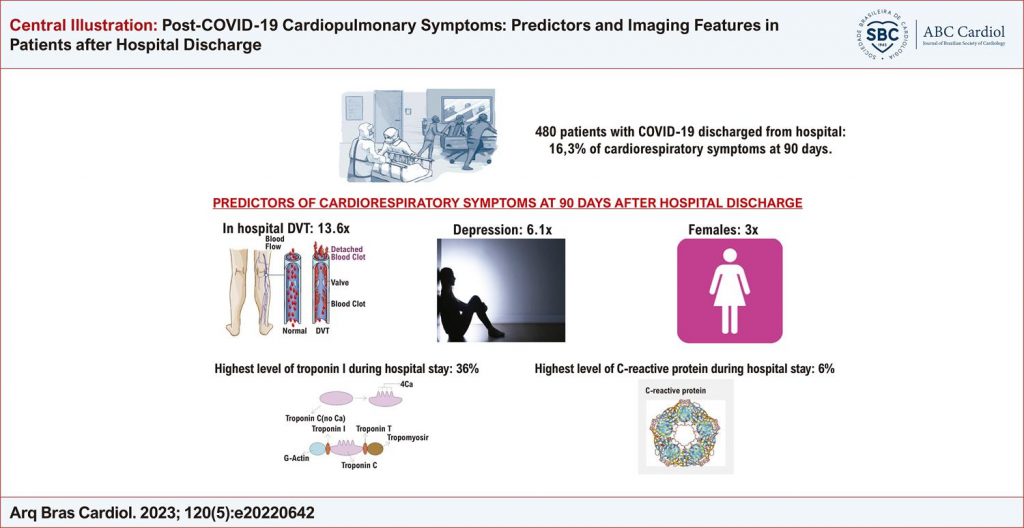Arq. Bras. Cardiol. 2023; 120(5): e20220642
Post-COVID-19 Cardiopulmonary Symptoms: Predictors and Imaging Features in Patients after Hospital Discharge
This Original Article is referred by the Short Editorial "The Clinical Impact of Cardiovascular Symptoms on Post-Acute COVID-19 Syndrome".
Abstract
Background
Most of the evidence about the impact of the post-acute COVID-19 Syndrome (PACS) reports individual symptoms without correlations with related imaging.
Objectives
To evaluate cardiopulmonary symptoms, their predictors and related images in COVID-19 patients discharged from hospital.
Methods
Consecutive patients who survived COVID-19 were contacted 90 days after discharge. The Clinic Outcome Team structured a questionnaire evaluating symptoms and clinical status (blinded for hospitalization data). A multivariate analysis was performed to address the course of COVID-19, comorbidities, anxiety, depression, and post-traumatic stress during hospitalization, and cardiac rehabilitation after discharge. The significance level was set at 5%.
Results
A total of 480 discharged patients with COVID-19 (age: 59±14 years, 67.5% males) were included; 22.3% required mechanical ventilation. The prevalence of patients with PACS-related cardiopulmonary symptoms (dyspnea, tiredness/fatigue, cough, and chest discomfort) was 16.3%. Several parameters of chest computed tomography and echocardiogram were similar in patients with and without cardiopulmonary symptoms. The multivariate analysis showed that PACS-related cardiopulmonary-symptoms were independently related to female sex (OR 3.023; 95% CI 1.319-6.929), in-hospital deep venous thrombosis (OR 13.689; 95% CI 1.069-175.304), elevated troponin I (OR 1.355; 95% CI 1.048-1.751) and C-reactive protein during hospitalization (OR 1.060; 95% CI 1.023-1.097) and depression (OR 6.110; 95% CI 2.254-16.558).
Conclusion
PACS-related cardiopulmonary symptoms 90 days post-discharge are common and multifactorial. Beyond thrombotic and markers of inflammation/myocardial injury during hospitalization, female sex and depression were independently associated with cardiopulmonary-related PACS. These results highlighted the need for a multifaceted approach targeting susceptible patients.
Keywords: COVID-19; Depression; Sex; Signs and Symptoms
726

